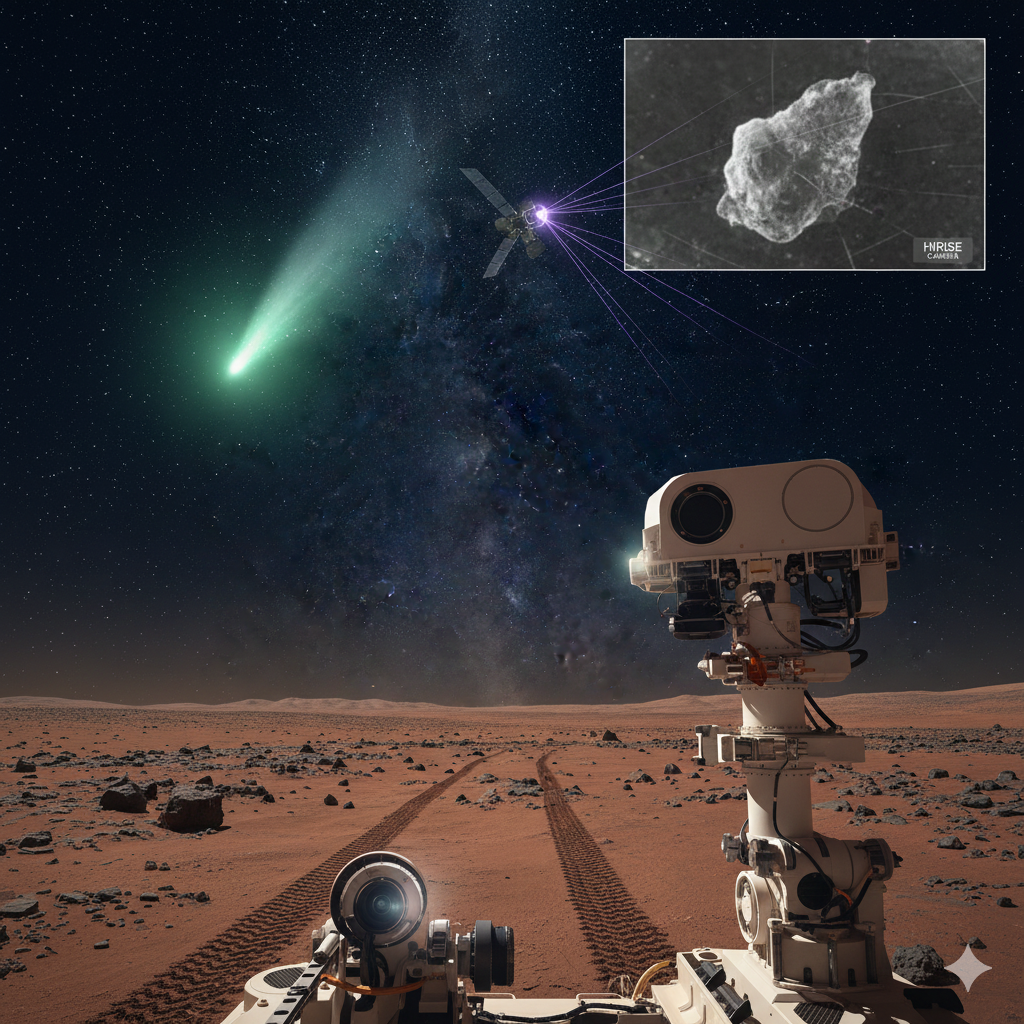The Third Confirmed Interstellar Visitor
NASA has released a stunning collection of images and data captured by multiple spacecraft across the Solar System of the interstellar comet 3I/ATLAS. Discovered in July 2025, 3I/ATLAS is only the third object ever confirmed to have originated outside of our solar system, following ‘Oumuamua and 2I/Borisov. Its hyperbolic trajectory—a path that does not orbit the sun but instead cuts through and exits our system—confirms its origin from deep space.
The Mars Reconnaissance Flyby
The most significant observations came not from Earth-based telescopes but from NASA’s fleet of spacecraft orbiting and roving on Mars. As 3I/ATLAS passed within 19 million miles (30 million kilometers) of the Red Planet in early October, the mission team orchestrated a rare, coordinated viewing campaign:
-
Mars Reconnaissance Orbiter (MRO): MRO’s high-resolution HiRISE camera captured the closest views, revealing the comet’s massive, bright cloud of gas and dust (called the coma).
-
MAVEN Orbiter: The MAVEN spacecraft captured ultraviolet images which are critical for identifying the chemical composition of the comet’s coma. Scientists are looking for unique molecules that could reveal the chemical makeup of the planetary system where the comet was born—a direct sample of material from another star.
-
Perseverance Rover: Even from the Martian surface, the Perseverance rover used its Mastcam-Z instrument to capture a faint, streaking smudge of the comet against the night sky, a difficult feat requiring extremely long exposures.
A Multipurpose Observation Campaign
The interstellar visitor was so widely observed that it became one of the most-watched objects in astronomy. Missions dedicated to observing the Sun (like STEREO and SOHO) and asteroids (like Psyche and Lucy) all turned their cameras to track 3I/ATLAS as it plunged toward its closest approach to the Sun. This comprehensive observation campaign allows scientists to compare the comet’s behavior and composition to that of comets native to our own Solar System, providing a rare window into the materials and evolution of other stars’ planet-forming disks. 3I/ATLAS is now on its way out of the Solar System, eventually expected to drift past Jupiter’s orbit in the spring of 2026. 700 701 702 703 704 705 706 707 708 709 710 711 712 713 714 715 716 717 718 719 720 721 722 723 724 725 726 727 728 729 730 731 732 733 734 735 736 737 738 739 740 741 742 743 744 745 746 747 748 749 750 751 752 753 754 755 756 757 758 759 760 761 762 763 764 765 766 767 768 769 770 771 772 773 774 775 776 777 778 779 780 781 782 783 784 785 786 787 788 789 790 791 792 793 794 795 796 797 798 799 800 801 802 803 804 805 806 807 808 809 810 811 812 813 814 815 816 817 818 819 820 821 822



